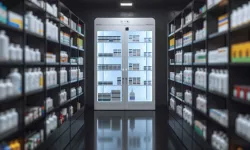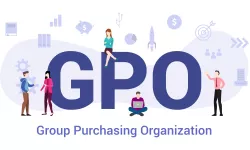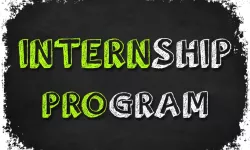Management

Diversion management starts before a new staff member walks in the door. It is looking for red flags, even before any access to medications is given. It starts before any staff is hired and can be before an interview is offered. Most hiring managers assume that the human resources team is doing their due diligence to monitor for potential issues that may arise, but without asking questions and knowing the process, it is possible that expectations do not meet reality. In addition, we assume that licensing boards are also watching for possible risk factors, but many of us have not reviewed the business and professions code related to licensing and possible loss of license, which may not factor in every misdemeanor charge.
To start from the beginning means that the pharmacy diversion lead needs to meet with human resources to define a set guideline for onboarding any new employee. This information should be shared with your diversion committee or group, and guidelines should be created for screening new hires. This includes “deal breakers,” for example a Driving Under the Influence (DUI) or other charge related to alcohol, illegal, or dangerous drugs within the last 3 years, regardless of felony or misdemeanor status.
This may also mean training human resources staff on how to properly review a professional license, including any public documents and the charges to the applicant by the board. Knowing the issue and the timeline of events better allows the hiring manager to make an educated decision on hiring, and/or can allow the diversion team to better monitor those at a higher risk. For example, a recent hire had public documents about past diversion and substance abuse treatment at a prior facility. This was not discovered until possible diversion occurred at the current facility. The knowledge of the past diversion would have helped decrease the risk to the new institution, the staff member, and most importantly the patients he was treating.
If the decision is made to hire a licensed staff member, prior to giving them access to automated dispensing machine (ADM), the system access request should require the staff member to acknowledge their risk of diversion. This includes asking questions regarding past infractions, but also asking about any current or pending investigations at previous facilities and/or within other localities or states. It is also important to identify the system access request form as a legal document, so that should a new staff member choose to put inaccurate information on the form, termination can be considered.
The system access request form allows the diversion team and the pharmacy informatics team to capture individuals at high risk who may have not been identified by human resources. For example, an employee may have been hired but while waiting to be onboarded was arrested for a DUI, or an employee recently left an institution after being placed under investigation for diversion but with a licensing board that is only starting the investigation process.
In summary, diversion management is not just what is occurring within the walls of the institution. It starts when a person applies to your facility. It is critical to research all avenues for areas of concern, and to ask important questions and understand the current licensing and onboarding process. It is every member of the team’s responsibility to ensure that the staff, facility, and patients are at the lowest risk possible.

What is psychological safety? Psychological safety is a shared belief that one will not be punished or humiliated for speaking up with ideas, questions, concerns, or mistakes. In a psychologically safe environment, people feel comfortable in asking a question, raising a concern, providing feedback, and contributing to a discussion without fear of negative consequences.
Why have a psychologically safe environment? There are many benefits to creating a psychologically safe environment in a pharmacy including increased workforce engagement and motivation, increased safety culture, and decreased patient harm. Interestingly enough, psychological safety is embraced by other industries such as the technology industry for its ability to drive innovation.
How can I create a psychologically safe environment in my pharmacy?
- Share errors. Start daily huddles and team meetings with a safety story. Keep things simple, short, and sweet. Rotate who shares each day. Recognize and reward people for speaking up and sharing errors and close calls. This is also great opportunity to share what has been done to address past errors. As a leader, practice active listening as things shared could be future process improvement projects!
- Thank people for sharing their opinions – even when you may disagree! In a psychological safety training exercise I attended, we were asked to discuss as a group what it would "feel" like in a psychologically safe environment of which we thought everything would be rosy with hearts and rainbows. Our instructor shared that psychological safety can feel uncomfortable. We were all dumbfounded. The instructor went on to explain that as a leader, you may not be used to someone disagreeing with you which will feel uncomfortable. Fight the urge to defend your position and just remember that everyone brings a unique perspective.
- Model vulnerability. As leaders, we feel like we should have all the answers, fix all the problems, and be absolutely perfect all the time. Leaders are humans too. There is no shame in asking for help which may take the form of delegation, collaboration, or even having motivated team members take on a stretch project. Additionally, admitting to the team your mistakes and shortcomings shows vulnerability, builds trust, and sends a message that everyone makes mistakes but we can all learn from it.

One of the greatest and ongoing conveniences that offers constant progress certainly lies in technological advances. We see this in every aspect of our daily lives. For evidence of the massive societal shift that technology offers look no further than your cell phone, tablet, or computer. It’s a safe bet that once you think you have it down, the next shiny toy hits the market.
Healthcare, particularly Pharmacy, is not immune to these phenomena. The rapid advancement in all areas of Pharmacy practice aided with well positioned technology has presented an array of opportunities to assist a well-oiled Pharmacy program to elevate to the next level. With that comes the responsibility to utilize the appropriate technology based on the individual needs of the practice environment and to go all in. Think of that treadmill you had to have on January 2nd, to embark on your New Year’s resolution. You either have your ticket to your beach body or a $2000 hanger. It’s all up to you how you employ your shiny new toy.
Let’s look at a few topline thoughts on technology and the how/why you would want it, how you would use it and what may be worth it or not based on your strategic focus.
The first thing to evaluate is your clinical programming and the human involvement you want to incorporate. For this you must evaluate several key points, such as how you want your technicians and pharmacists to matriculate outside the pharmacy. For example, if you want pharmacists rounding more, perhaps have them decentralized permanently, or have technicians circulating on the floors and in the ED say for medication reconciliation, then you need to have the technology to perform automated duties in the pharmacy.
Next you need to look at the cost element. Just because it looks great and has a significant price tag doesn’t mean you need it. Look at the contracts you have to see where you can make deals or lean into a barter type relationship. Maybe if you offer to be a Beta site for new technology, you can get a much better deal if you are willing to share outcomes. Maybe you haven’t made the most of economies of scale and you have some opportunities there.
The next big question is your regulatory readiness and how well you have performed in recent surveys. If you find you are running a fire drill every time you have to produce data on survey, then the technology you need is more along the lines of automated reporting and/or catching issues in real time. For example, if you have automated medication dispensing cabinetry and need to produce diversion information, the reports that are baked into this technology are invaluable.
In terms of technology groupings, let’s break them down into bite size pieces.
Automated Dispensing Machines. Most likely you already have this or want it. The question is do you use all or most of what this system has to offer? Do you have overlapping technology that you don’t need because you have not tapped into the full cadre of offerings your chosen system is capable of? The companies that sell this technology also offer support that is baked into the contract. Talk to them about what they suggest and schedule training and overviews a couple times a year to assure you are up to date on the software, are using the administrative options to their fullest capacity and evaluating anything new that may have been rolled out on their platform. This may seem like a no-brainer although you may be surprised at what you have been missing out on. Maximize everything in your chosen system to create diversion protocols, reduce possible adverse events and to stay ahead of the last outdated pill lurking around just begging to be found on your next survey.
Remote Verification. Let’s say you want to, need to or have no choice but to keep the FTE component down. Depending on your state laws, you likely have the ability to incorporate your ADM’s with remote verification for overnight coverage for example, thus not relegating this to the emergency cabinet that has to be reconciled the next day as well as offering real-time verification of the order to satisfy regulatory oversight. Pharmacy should not be practiced only during daylight hours.
RFID. There are so many options here and the technology is great, but not widespread and/or financially attainable which means grouping RFID into buckets. It can be used for specialty medications using technology that is like a hotel mini fridge essentially making these consignment medications. You only pay when you use them and get reminders when these wildly expensive therapies are about to go out of date. Another great grouping is code cart replenishment and documentation, two big issues for every hospital since the beginning of time. RFID technology can make refilling and checking the trays much more streamlined, allowing for the redirection of pharmacists’ time incorporating the reporting from the RFID and tech on tech checking depending on state laws.
Computerized Physicians Order Entry. Everybody must have it. Many are annoyed by it. Here’s the thing, gradually increasing the use allows for order sets to be used more effectively as well as testing the limits of policy acceptance. Let’s say that your hospital has approved TPN to be written by Clinical Nutrition, and the orders are based on pre-mixed PPN and TPN. In this scenario, physicians’ time is eased up, treatment is expedited, the expertise of Clinical Nutrition is appropriately employed, and the relevance of the program can be evaluated by the reporting that can be obtained. This is an excellent story to tell when the JC shows up in your lobby.
We have mentioned just a scant few of the possibilities available to create an optimized technology infused clinical environment. The choices available and reasoning for use could go on for many articles with one overarching theme which is when thinking about what you have, what you want and what makes sense take the whole picture into account as well as your ability to make the most of your options. To achieve this, ask yourself a few key questions. Am I using what I have to full capacity? What gaps do I need to fill in? Where are our vulnerabilities and what do we struggle with? If you work backwards from there you can engage in a more mindful fashion all around turning your attention to the technology that works for your patients and your practice.

Leonid Gokhman, PharmD, manager of pharmacy business operations at Harris Health System, takes a proactive approach to running his operation, rather than being reactive. He encourages his pharmacy, nursing, IT and revenue cycle peers to adopt this mindset.
“If you’re reactive, you’re creating so many other issues — not only for yourself, but for multiple teams,” Dr. Gokhman says. “If you're able to put things in place that prevent issues from happening in the first place, you drastically cut down on a lot of clutter, errors and unnecessary work.”
Part of taking a proactive approach means working directly with the frontline staff not only on project development and implementation, but maintenance as well. Staying within the pharmacy walls and only working with your team means you’re not getting the bigger picture of how the hospital system operates, he says.
Plus, when major departmental initiatives are carried out in silos, crucial components may be overlooked. This oversight could result in either beneficial or detrimental downstream effects for other departments.
Five years ago, he was asked to participate in the hospital system’s vaccine redesign project. When he first started the project, the error rate was almost 50%. (Yes, you read that right. 5-0.)
“If you have errors in your clinical documentation and on your charges, you will not get paid or get paid inappropriately,” Dr. Gokhman says. “As I was digging through the system build and working with nursing leadership — it became clear to me that the system build was way too complicated. Our providers had five different workflows, requiring them to memorize numerous charge codes to manually post administration charges and contend with confusing order names. This diverted their attention away from direct patient care.”
Five workflows were four too many. His first step was to consolidate multiple provider and nursing workflows into one. Next, vaccine order names were updated according to ISMP (Institute for Safe Medication Practices) and Epic guidelines. Finally, a system build was implemented to automatically post vaccine and vaccine administration charges based on the documentation for each vaccine.
“Keep it simple,” Dr. Gokhman says. “When frontline staff are presented with too many options, they are prone to choosing incorrectly or resorting to workarounds. These workarounds might seem beneficial, but on the frontend, they lead to order entry and documentation errors. This causes multiple coding, billing and reimbursement issues on the backend.”
By simplifying and automating the workflow, they’ve drastically cut down the number of errors. Recently, a third-party audit revealed a 100% vaccine billing compliance rate, surpassing the industry standard of 95%.

The day before I was expecting an employee to return from maternity leave, I received her resignation letter, citing reasons of wanting to focus on motherhood. The timing was unfortunate, but I was happy for her. As a mother, this made me wonder if I was making good life choices. As a manager, this made me feel like I’m competing with little babies for mom’s time and talents. How can we retain good employees when they’re in love with the competition? The truth is, we can’t. The kids always win, and they should. We can only hope to join mom in loving these little, squishy sugarplums by giving her the support she needs to excel at home and then in the workplace.
Raise Benefits Awareness
They say, “a baby changes everything,” and this extends to the need for benefits and the enrollment period. Benefits could be anything from financial planning, expanding insurance coverage and assigning beneficiaries, or simply knowing they have employee assistance for stress management. Having insurance coverage for breast pumps, lactation consultants and pelvic floor physical therapy is tangible proof of the company’s support for mothers of newborns. On-site childcare is an attractive benefit, too! Encourage expecting moms (and dads) to consult human resources and benefits management about what opportunities are available through your institution.
Support the Breastfeeding Journey
Time spent breastfeeding a child can equal as much time spent working a full-time job. The American Academy of Pediatrics (AAP) recommends exclusively breastfeeding for at least six months. Compare that to maternity leave, which can be as short at 6 weeks. That means new moms are working two jobs! Before she delivers, make her aware of lactation services which can include an on-site lactation consultant, time and space to express milk, and storage space for breastmilk. The AAP is an excellent resource for this, and they issued a news release in 2022 citing recommendations for corporate support of breastfeeding: American Academy of Pediatrics Calls for More Support for Breastfeeding Mothers Within Updated Policy Recommendations (aap.org)
Creative Scheduling & Cross-Training
Drug shortage mitigation proved to be a mere training ground when compared to navigating the workforce shortage, making employee retention seem more important than ever before. Overall, what moms need from their employer is to be able to leave work to care for their child without judgement from management and coworkers. The workflow should be designed so mom can meet the needs of her sick child, or attend a school function, without added guilt of her workflow left unattended. Creativity is key when it comes to meeting the needs in the department while balancing employees’ needs outside the department. This may mean schedule changes, creating PRN staffing requirements, or expanding benefits to part-time employees. Cross-training employees ensures the needs of the department are met when special occasions arise during this precious season of life.
Moms have a reputation for being pretty remarkable creatures. Research has shown that mothers’ brains are equipped to be “more efficient, flexible, and responsive” as a result of changes occurring in the perinatal period.1,2 That makes sense when we think of our cavewomen ancestors protecting their young, but these traits make valuable employees in today’s era, too. She may not be shooing away a sabertoothed tiger, but it can feel that way as she juggles the demands of work and home life. Working with employees as they venture through seasons of life, especially young motherhood, lets them know they are supported and valued at work, and creates a space for them to build a career.
These opinions are those of the author and not of Pharmacy Angle or USA Health.
Ref:
1 Kinsley, Craig Howard, and Kelly G. Lambert. “The Maternal Brain.” Scientific American, vol. 294, no. 1, 2006, pp. 72–79. JSTOR, http://www.jstor.org/stable/26061302.
2 Orchard, E.R., Voigt, K., Chopra, S. et al. The maternal brain is more flexible and responsive at rest: effective connectivity of the parental caregiving network in postpartum mothers. Sci Rep 13, 4719 (2023). https://doi.org/10.1038/s41598-023-31696-4.

Leonid Gokhman, PharmD, is a licensed, Epic Willow certified pharmacist who has more than 25 years of experience in the field of pharmacy. He has extensive experience in managing inpatient, ambulatory, and retail pharmacy operations, IT/informatics, value-added health economics, Formulary review/approval process, 340B Program, Medication Assistance Program, revenue cycle management, as well as managing both funded and unfunded patient markets.
For fifteen years, Dr. Gokhman has worked at the Harris Health System – a non-profit healthcare system located in Houston, Texas. For nine years, he’s managed the pharmacy business operations of the organization’s revenue cycle department. In his current role, he’s learned how crucial it is to have a pharmacist representation within the healthcare organization’s revenue cycle department.
Before his position, he said — much like the majority of pharmacists — he didn’t know much about the backend processes involved in medication billing, coding and reimbursements. As a frontline pharmacist, he was focused on his clinical work and patient care.
However, after learning about the inner workings of the revenue cycle processes, he’s developed a full understanding of the healthcare system’s frontend and backend processes. His knowledge and experience have allowed him to create and optimize all medication-related charging and billing processes.
This has ultimately contributed to more than doubling the organization’s cash collections, while saving millions of dollars through the 340B Program and medication assistance programs, and optimizing the organization’s Formulary.
Currently, he has three analysts working for him who are pharmacy technicians. He’s trained them to understand the system like he does. He shared a few examples of how being a pharmacist with knowledge about the revenue cycle can help your organization:

Centralizing pharmacy services is a popular topic, as health systems explore avenues that can bring value to the organization. The first step to centralizing services is determining what functions can be performed from a central location and the value of each. This will be specific to each health system as regulatory requirements are different in each state, as are the services offered by health systems, the prescription volume/mix, and the geography. Services that a central pharmacy can provide include mail order/specialty pharmacy, call center, prior-authorization, patient assistance, self-distribution/warehousing, repackaging, kit/tray management, training, order verification, and medication reconciliation.
Once a decision is made on the services, the next step is defining how each of the functions will be performed. Traveling around to the multitude of Central Pharmacies throughout the country you will see varying levels of automation versus manual processes. It is important to know about staffing limitations and address those through automation during this design phase. Automation vendors are expensive, long-term partners so this is a key decision point. Due diligence is needed, so leverage relationships with other health systems, GPOs, wholesalers, and potentially consultants, depending on the aptitude of your internal team. It is worthwhile to look outside of typical pharmacy vendors for technology solutions, as many of the activities performed from a central pharmacy are warehouse activities.
Another long-term decision is the floorplan of the central pharmacy. Even after the recent shift to move employees to work-from-home, most central pharmacies wish they had more space. There will be attempts to reduce square footage in favor of budget. If a compromise needs to be made on square footage, look to what employees could move to remote/hybrid, but be steadfast in your requirements for the operations and storage areas within the facility. Remember to define the footprint based off current opportunities AND potential future growth. It is much less expensive to plan for a potential 2nd floor upfront, rather than rip up concrete and replace support beams in the future.
Once the general floorplan is defined there will be a decision to buy existing property, build from scratch, or join existing property, which typically means co-locating with Supply Chain and/or Lab. If you are joining an existing centralized Supply Chain many of the vendor decisions may already be made (Warehouse Management Software, courier vendor, shipping software, etc.). If it’s a new build there will be a lot more decisions, but more freedom in design. Your ROI will be impacted by the location, and ability to tap into existing services.
Data is crucial in defining the revenue, costs, and savings available to the health system to support the business plan, as those will be the metrics that determine the viability of the facility. The goal is an autonomous pharmacy with 0 medication errors, 0 medication waste, and no manual intervention until medication is delivered to the patient. An autonomous pharmacy allows 100% of the pharmacists’ time spent on clinical activities, with 100% visibility into inventory levels system-wide, and 100% regulatory compliance. Lean on the wealth of data available through your EHR, dispensing software, automation software, and financial software to communicate the ROI of your proposed services. Be bold in your request of vendors, as much of the industry is inefficient today and is ripe for automation.
At this point, if your business plan supports a central pharmacy, be prepared for the multitude and magnitude of decisions that need to be made. Details matter, and there will be a lot of details. If you’ve built a custom home, you can appreciate the minutiae of building something from scratch. Defining every data/power drop, whether employees get a laptop or desktop, the number of monitors for an employee, furniture, signage, and all the way down to the location of each trash can. Do not underestimate the resource commitment from Pharmacy for the sheer volume of decisions that need to be made, the new technologies and software integration development needed, and the hiring required to open a new facility. Building out a new facility and team will demand significant resources, while the day-to-day functions of pharmacy will still need to be tended to.
Staffing a new facility is a challenge given the pharmacist and pharmacy technician shortage. Pharmacy will staff positions outside of the pharmacy department as well (Security, IT, Environmental Services, etc.). Lean on the leaders of those departments within your health system. Much of your time will be spent on interviewing and onboarding, which will all need to be timed out with a go-live date that is a moving target. Plan a calendar block for the interviews and create interview teams to tackle hiring as your team grows. This is another key focal point, because culture matters and as an organization scales you want to ensure your environment is a desirable workplace that can attract the top talent in a competitive market.
Go-live is likely a phased implementation, as it is typically too much to take on day one. Plan out your phases as many of the resources may overlap, or some of the functions may be required to go-live at the same time. With the knowledge you’ve gained with your implementation, share with other health systems. We are all in this together to provide first-class care for patients and to support the viability of the health systems in our community.

Save money. Of all the things we can be sure we need to accomplish in our chosen profession, of this we can be sure. We are tasked with saving money. You could say that a seasoned professional would find little that would be surprising about this notion although it has brought me more clarity in how consultants are positioned to make a real difference in the provision of healthcare, in a way that I think is somewhat diminished in the “daily business”.
As we have discussed, contracting and adherence to those contracts can be passively lucrative. Developing habits that combine your distribution and Group Purchasing Organization (GPO) and being mindful of that relationship is one way to assure you keep a firm eye on the bottom line.
In tandem to the points we examined around distribution, the GPO contract itself and value adds the relationship offers is something every hospital/health system should be acutely aware of.
Are you with the right GPO? Do the blend of offerings and financial incentives mesh well with your practice and plans for the future?
There are likely contracts in place that either need to be maximized or re-negotiated. Start with the GPO and build upon the terms and conditions they have already negotiated with the companies they have vetted. This cuts out a lot of background work in that the GPO has done the hard part already.
There are often areas to operationalize group purchasing possibilities to realize shareback (the monies refunded to the I/H/C for performance stop gates) and/or contract compliance thresholds. Have you combined opportunities wherever you can? Have you shifted your clinical activities to reflect a formulary that is therapeutically sound as well as contractually beneficial? This brings more money into the health system, simply by making essential contractual points a reality in practice. This approach takes back the money that many organizations leave on the table simply by how the I/H/C interacts with the GPO.
GPO’s offer quarterly reviews. This may seem like a time suck, one in which you will learn little to effectively change any approach although this review can be invaluable if you operationalize elements of it as it pertains to your individual practice. If you are a large IDN then you have economies of scale to explore, increasing your shareback. This approach also creates a relationship with the GPO such that when it comes time for a contract roll, your representatives know what you are looking for and what you plan to explore moving forward.
The online resources of GPO's can offer an additional lever of opportunity. They can tell you how close to contract compliance you are, where you could shift activity and what that means in the aggregate. What possibilities are you not taking advantage of and how your efforts may combine with Supply Chain to maximize opportunity. Each GPO approaches this a little differently, but the general idea is the same. If you use their analytics with your own, it is possible to create a unique pharmacy program for your operation that speaks exactly to the clinical pathways you wish to explore and/or change.
We have so many obstacles in our way, fire drills every day and constant change to keep up with. Our approach to the distribution and GPO channels can lighten that load so we can turn our attention to creating programming that aligns with prudent financial moves instead of working against us as we attempt to make the most out of our vendor relationships. Bring them in close instead of putting them on the back burner to simmer.

Amidst COVID-19, the U.S. labor market, particularly in healthcare, faced substantial job vacancies (Fontinelle, 2022). The sweeping resignations of 2021 exacerbated these gaps, as competition among employers to attract workers created a cycle prompting people to seek better opportunities, as speculated by Furman (2021). An estimated 60% of healthcare support workers will leave their positions within the next five years (Loria, 2023).
Pharmacies nationwide grappled with a notable shortage of pharmacy technicians. ASHP's 2021 online surveys revealed turnover rates of 21 to 30% among hospital pharmacy technicians. Additionally, 10% of respondents reported losing up to 41% of these technicians. The surveys highlighted that over 97% of participants resorted to overtime pay and utilizing pharmacists to cover vacant technician shifts. In this piece, I will detail my initiative in revamping the pharmacy internship program to combat the technician shortage at my pharmacy, located near three esteemed pharmacy schools within a 50-mile radius.
The primary goal of the revamped program is to foster the development of pharmacy interns within the hospital pharmacy's operations. Interns primarily check unit dose medication refills in automatic dispensing cabinets while also receiving training in various pharmacy tasks such as sterile and non-sterile compounding, medication history reconciliation, crash cart drawer management, and controlled substance documentation FOR DIVERSION PREVENTION.
The pharmacy interns actively participate in the development of this internship program. Interns are responsible for compiling and updating the intern manual. They also develop a competency checklist for each intern task. A new intern is trained by those who have demonstrated competency in a given task. A new intern needs to demonstrate competency before independently performing the task.
An intern must complete the required USP 797 media-filled tests to be eligible to train in the IV room. IV-trained technicians are responsible for training interns in sterile compounding following the established sterile compounding policies. The IV room specialist technician or the IV room pharmacy coordinator is responsible for checking an intern's competency in making sterile products. The same training methodology is used for training interns in performing other tasks.
Encouragement is given to interns to undertake technical writing projects to hone their skills. Those inclined towards technology can learn about system integration, while those interested in hospital pharmacy management can engage in workflow and inventory enhancement projects. Two lead pharmacy interns oversee scheduling, training, and competency checks of other interns, as well as organize quarterly intern meetings, thereby refining their leadership skills.
A well-crafted pharmacy internship program not only addresses technician shortages but also equips pharmacy interns for future hospital pharmacy careers. Over the past three years, our pharmacy intern team has burgeoned from 6 to 18 members, at one point helping cover up to seven open technician positions. Not only do pharmacy interns help maintain a smooth pharmacy operation by filling in open shifts, but they also help reduce overtime pay and burnout among staff.

Artificial intelligence (AI) has been around since the 1950s, and pharmacy has always found a way to expand its scope of practice every time a technological advancement improves efficiency. So, let’s examine some ways AI could enhance hospital pharmacies.
Fewer Shortages Through Improved Manufacturing Processes
Over the last few years, drug shortages have been a major concern for just about everyone in healthcare. Not only have supply chains failed, but major recalls may have left your hospital scrambling to take care of your patients. With AI, drug manufacturing and supply chain management should become streamlined.
AI can predict when a machine may fail or require maintenance by learning how it normally operates and performs. AI monitors equipment in real time and detects any deviation from normal activity. Earlier detection decreases equipment downtime and increases overall manufacturing productivity.
Similarly, AI can improve batch quality and consistency through more accurate quality control measures. It uses data from current quality test results to detect defects in real time. Fewer batch failures mean fewer recalls.
Lastly, certain AI algorithms work to predict drug demand. So, it can help optimize inventory, production schedules, and distribution, improving the supply chain.
Lower Drug Prices by Reducing Drug Development Costs
You know that the customer ultimately pays for the billions of dollars and more than 10 years it takes drug companies to successfully get a new drug to market. Now, AI may help reduce those costs.
Using large datasets of chemical structures and their related activities, AI may help predict how new drug candidates might behave in the human body. Along the same lines, AI can find patterns in biological data and disease progression to identify potential drug targets. So, drug companies may save on resources in two ways: finding what to target and selecting the optimal drug candidate for that target.
This same concept is also being used for drug repurposing. AI can analyze the structure of an already approved drug and find a potential new indication, which is significantly cheaper than getting a new drug candidate to market.
Beyond drug discovery and repurposing, AI can help optimize clinical trials from recruiting to analyzing data. Finding patients and evaluating protocols and trial designs can happen faster. Getting real-time trends on data means trials can more easily adapt and pivot if needed.
All of this means drug companies have less overhead and expenditure, which could lead to cost savings for hospitals.
Improved Patient Outcomes Through Better PKPD Data
Few things are more frustrating than to research a drug-related question only to find it hasn’t been researched in your patient population. Can this drug be given to someone with kidney disease? Or during pregnancy? Or an infant? AI may be the solution.
Historically, animal studies have been used to evaluate the pharmacokinetic and pharmacodynamic (PKPD) activity of a drug. These studies are time-consuming and with small sample sizes, and they may not accurately predict what will happen in humans.
But now, PKPD activity may be predicted using AI. Some models can analyze how humans would react to the drug. This means an accurate safety, efficacy, and toxicity profile can exist before the drug is even given to an animal or human.
Other models focus on individualized care by analyzing patient-specific data. This can be used to predict how an individual may respond to a particular treatment, including disease management, side effects, and potential toxicity.
The Downside of AI
Like everything, AI has some downsides that you should keep in mind:
- Unintended biases can happen, especially with limited inputted data. Examples of this include rare diseases and under-represented populations (race or gender) in clinical trials.
- Validating and regulating an AI model can be difficult. The industry and FDA provide limited guidance on this.
- Ethical considerations, like patient privacy and rights, need to remain a top concern as AI expands.
Like every technology, AI has its pros and cons. But one thing is certain—it’s here to stay. While most of the benefits hospitals may see are byproducts of other companies utilizing AI, there is no doubt that AI will eventually integrate into hospitals, optimizing your workflows and allowing your pharmacy to grow even more.